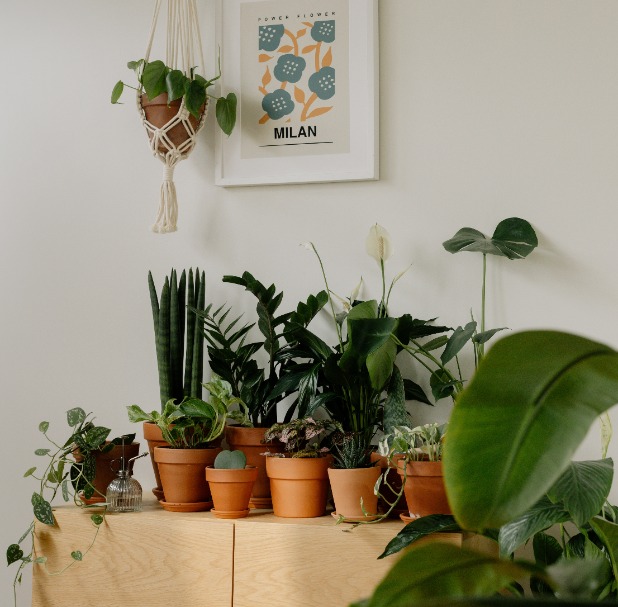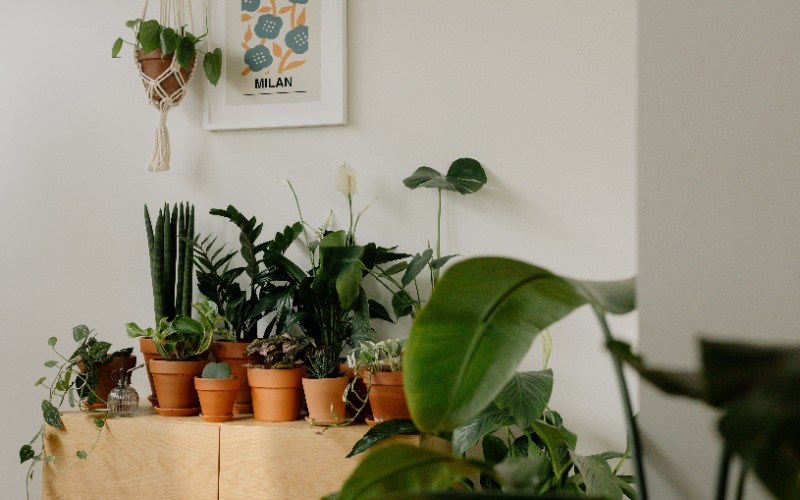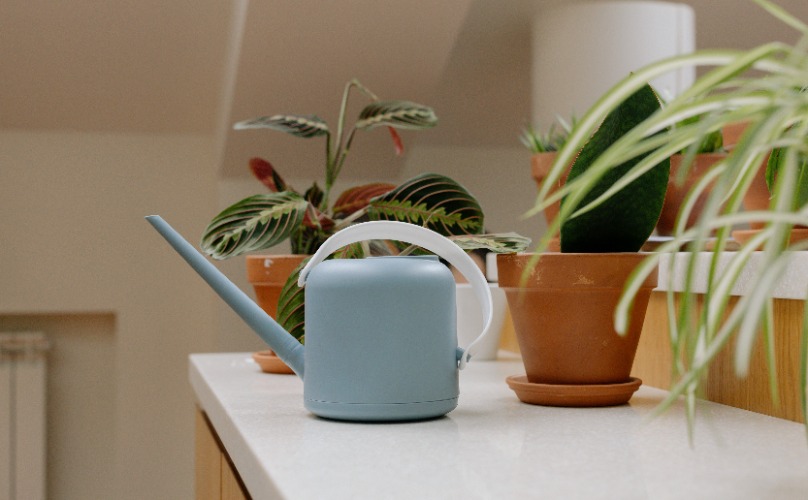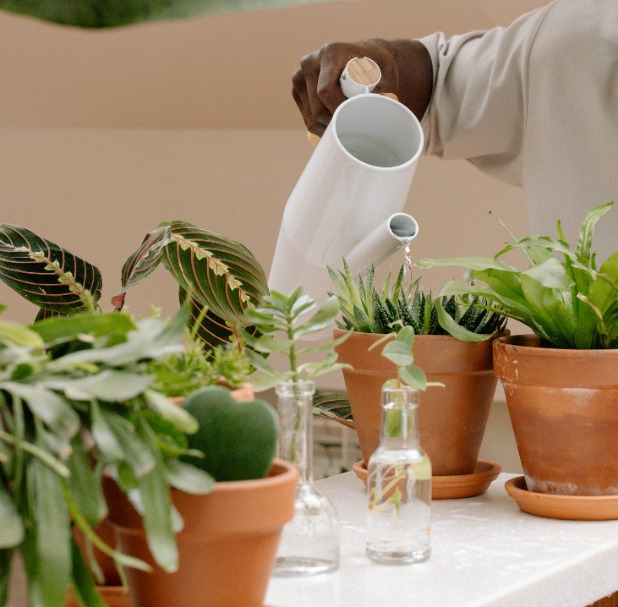
Deliver to
Belgium
 English
English

Watering. Maybe not something you always feel like, but it’s necessary. Indoor plants need water for their health. Every plant needs water. From the Cactus and Succulent to a real jungle plant like the Banana plant and Strelitzia. Water ensures that the nutrients in the plant can be transported.
Despite the fact that water is a basic need, water is also often the cause of plant death. How is this possible? We all simply give too much water! In almost all cases the excess water causes root rot. A handy tool is the water meter. Read more about the water meter at the bottom of this blog.
You don’t need a water meter, but do you want to know how much water your plant needs? Then it’s good to know that we can divide plants into three categories. You have plants that prefer to always be in moist soil, but there are also plants that prefer to let their soil dry out between watering sessions.
The main reason a plant needs a lot of water is because it likes to stand in moist soil. Especially in summer, soil can dry out within a week. And that doesn’t make a thirsty plant happy!
Plants that need a lot of water usually have large, long and/or thick roots. In addition, they usually come from a tropical environment, where they are used to some heavy rain showers.
On average? Well, whatever that is. At least they’re plants that like moist soil. Although it’s important that the soil dries up almost completely between watering sessions. A slightly moist soil is a favourite of these indoor plants! Keep in mind that the soil on top can be completely dry, while the soil still has enough water.
Plants that need little water like a dry soil between watering sessions. The soil can be left dry for a few weeks. And certainly in winter you can skip watering these plants for one or even several months. How quickly such an easy plant needs water depends on several factors. The three most important factors for the watering are the type of roots, how much light the plant gets and how big the plant is.




One of the most important things that are important for the amount of water is the type of plant. Tropical plants like the Banana plant need a lot of water, while a succulent plant like the Aloe Vera needs very little water. So you certainly don’t make the Aloe Vera happy if you give it the same amount of water as the Banana plant.
The size of the plant also matters. When the plant is 60 cm tall, it needs much less water than when it is 100 cm tall.
In addition to the size and type of plant, the type of flowerpot also matters. Do you have a terracotta flowerpot including saucer? Then you need less water compared to other flower pots. The terracotta material retains water, so that the soil remains moist longer. It is also easy to see when you have given too much water thanks to the saucer. In addition to the material, the size of the flowerpot also makes a difference. Is it almost time to repot? Then the plant needs more water. Roots come into contact with water relatively quickly in a smaller flowerpot. In addition, there is less soil that can retain the water.
As far as the amount of water is concerned, the type of soil also matters. A flowerpot filled with fresh soil will need water more often than old soil. With old soil, the potting soil often accumulates and becomes harder. It is then difficult to maintain a good drainage. The type of potting soil makes a difference, as does the addition of hydro grains. Hydro grains retain water, allowing plants to enjoy watering for longer than they would with old soil.
Is the plant in a light spot? Then the plant needs more water! Conversely, of course, this also applies to a plant in a dark place.
With less sunlight, a plant has less nutrition, which also means it needs less water. Sounds simple, but the location is soon forgotten.
Like the pitch, the season is important for the watering. From spring to summer plants need more water. From autumn to winter succulents can even go 2 months without water. The season is therefore also very important! Keep a close eye on the potting soil on very hot days. It may even be that after 2 days the potting soil has completely dried out. So pay attention!
With both air conditioning and heating you create an unnatural airflow. Both give a lot of dry air, which makes the water in the earth dry up sooner. Especially with heating, the earth can dry quickly. This also applies to the leaves of the plant. If the humidity is too low, the leaf can hang limp.
A water meter is a plastic tube containing a styrofoam float and a dipstick. As soon as the water meter comes into contact with water, the styrofoam starts to float. This causes the dipstick to rise and you get a clear picture of how much water there is in the earth.
You can buy water meters in different heights. From 12 cm to no less than 120 cm. You can make it as crazy as you want!
A water meter with vulcastrat is very useful for holidays, for example. Vulcastrat is a type of gravel and can suck up between 30 and 40 cm of water. This gives the plant more regular water. Also, not too much water is given. Handy! Questions about the water meter? Feel free to contact us, or leave a message below.